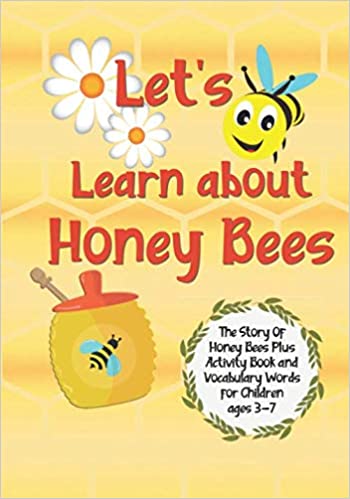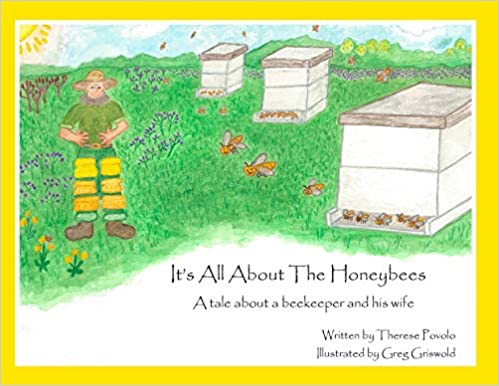Honey Bees are flying insects closely related to wasps and ants, and are known for their role in pollination and for producing honeyand beeswax.
Honey bees are a subset of beesin the genus Apis (mellifera), primarily distinguished by the production and storage of honey and the construction of perennial, colonial nests out of wax. Honey bees represent only a small fraction of the approximately 20,000 known species of bees which are very social and like to be surrounded by lots of other bees.
Where do honeybees live?
They live in elaborate nests called hives which can contain up to 20,000 bees at one time! The central feature of a hive is the honeycomb which is made up of bees wax. The bees even make the wax themselves. This wax is produced from glands on the underside of the abdomens of worker bees when they are between 12 and 15 days old. House bees then take this wax and make the honeycomb using their mouths. These cells of bees wax cells are within the honeycomb and it is where the young are raised and pollen is stored. The cells are all perfectly uniform in shape!
 The part of the hive where the queen lays her eggs is called the brood comb and this is where a new brood is raised by the colony. Honey bees have a highly structured social order which means bees divide into castes and some are seen as more important then others. Within one hive there can be only one queen bee whose sole purpose is to make more bees.
The part of the hive where the queen lays her eggs is called the brood comb and this is where a new brood is raised by the colony. Honey bees have a highly structured social order which means bees divide into castes and some are seen as more important then others. Within one hive there can be only one queen bee whose sole purpose is to make more bees.
Types/Castes
Queen Bee: Usually larger than the other bees (up to 20mm) and can lay up to 1,500 eggs per day. She has chewing mouth parts and a stinger and can live from two to eight years. Drones: are male bees and they have no stinger. Only a few hundred at most are in any one hive. They have big EYES to help them spot the queen bees and impregnate them. When this job is done they are considered non-essential and will be driven out of the hive to die. Worker Bees: do all the different tasks needed to maintain and operate the hive. They generally make up most of the occupants of the hive and are always sterile females. They take care of all the comb construction, brood rearing and tending to the queen. The are divided into House and Field Bees. Body parts: Honeybees have a bright color pattern to warn potential predators that they will sting if their honey is stolen. Honeybees have a stinger at the end of their abdomen with is full of venom. Only the females have a stinger and they will swarm out of the hive if it is under attack. Like most insects honeybees have have six legs and see through compound eyes which are made up of hundreds of smaller eyes!
What do Honey Bees produce?
Honey bees make honey! (surprise, surprise). Honey is a thick liquid produced by certain types of bees from the nectar in flowers. Honey bees refine and concentrate nectar to make honey. Honey is very healthy and is a natural sweetener that doesn’t rot your teeth! Honey bees stock up on nectar so they can still make honey when the flowers have no nectar (during winter). Unlike most insects honey bees remain active during winter. Humans and bears have always tried to figure out how to get the honey out of hives without getting stung!
What is the life cycle of a Honey Bee?
Honey bees are important pollinators. As the honey bee hunts for nectar, pollen sticks to the fuzzy hairs which cover their bodies. Some of this pollen rubs off on the next flower they visit, fertilizing the flower and allowing for better fruit production. Some plants would not produce fruit without the help of the honey bee so this is why their life cycle is very important to many other plants.
Life Cycle and duration.
The Queen lays her eggs in the cells of the honey comb. Larvae hatch from the eggs in 3-4 days. Cells are capped with wax by worker bees when the larva pupates (develops into pupa). A Queen bee hatches from its cell in 16 days. A Worker bee hatches from its cell in 21 days. Drone bee hatches within 24 days. Queens live for 3-4 years (only one per hive). Drones (males) die upon mating or are expelled from the hive. Workers live for a few weeks in summer or a few months in winter.



